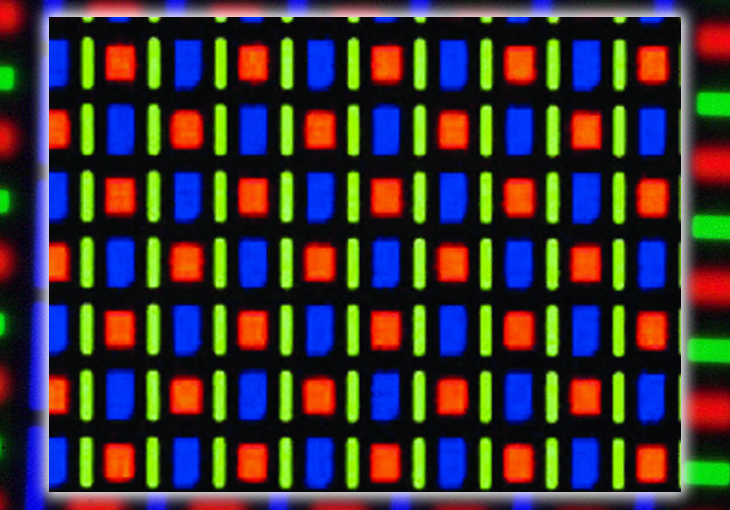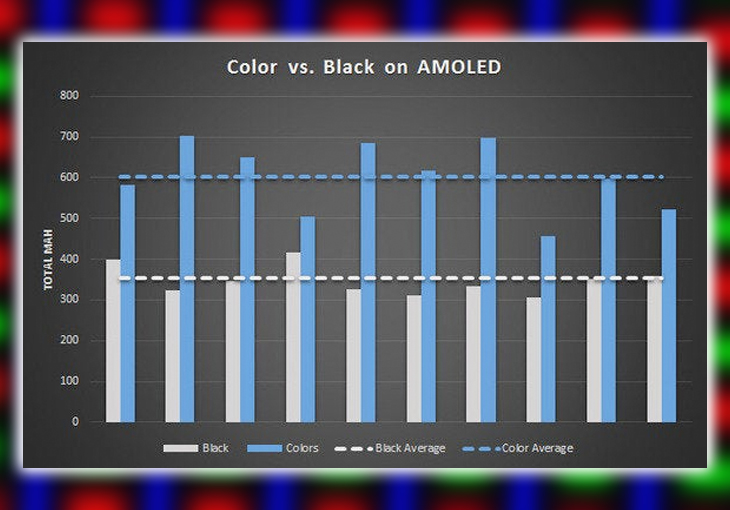Where AMOLED Screens Shine
The theory of why AMOLED used less power. When displaying black made sense when you understood how the technology differed from the LCD display. LCDs like the LG G3 or HTC One M8 produce light with an LCD backlight. The light shone through the pixels into your eyeballs. In this case, a black pixel was simply one in which the pixel had turned opaque. It blocked all the light streaming in from the backlight. The backlight was still on just the same.
An AMOLED doesn’t have a backlight at all. Instead, each little sub-pixel is like a tiny red, blue, or green colored light. If the screen is instructed to display black, it doesn’t need to block any light. It simply doesn’t light up any of the little colored sub-pixels. So theoretically, black pixels save you a lot of power because those pixels can be turned completely off. However, people sometimes make the mistake of thinking this is a function of brightness. That dark colors like gray are similarly efficient. There is a relationship between brightness and power. But to save juice, you need a true black as defined by the #000000 hex value. Anything else, the pixel is on.

As an added bonus, AMOLED screens have fantastic contrast thanks to how they produce light. So the text is very crisp when using a black background. The catch is that AMOLED screens typically use more power than LCDs when displaying bright colors. Predominantly white, where all the sub-pixels are fully lit up. The question is. Does a modern AMOLED still offer noticeable battery savings when using apps made with AMOLED-friendly black background options?
The Test
To make any conclusions about AMOLED power consumption, we need data. I used a 2014 Moto X-acquired data with an app that logs the total current drawn from the battery in mAh as reported by the Android OS. There is no reliable way to isolate only the power consumed by the screen. Still, we don’t need exact values to know if there’s a big difference in real-world power draw. All that’s required to conclude is the difference between total power consumption with black and non-black apps.

To get valid data for this test, I tried to reduce the variables as much as possible. Using the Android developer tools. I disabled all background processes, turned off syncing, and placed the device into airplane mode to be safe. The screen was locked to 50% brightness timeout and set to 30 minutes for the duration of each test.
Monitoring
I used Reddit Sync for the test as it had an easily accessible AMOLED mode. The system monitoring app was set to log the power draw once every 60 seconds and was allowed to run for 30 minutes until the screen shut off. I ran this with Reddit Sync in AMOLED mode again in regular mode. The screen wasn’t all black in AMOLED mode; there was still content on it. But this was a more realistic scenario.

The chart above shows the first 10 data points from each run. And the overall average power consumption of all 30 measurements. You can see pretty clearly that, in this case, a black screen reduces how much juice the phone is using. Power consumption was 41% lower overall when using the predominantly black interface in Reddit Sync.
So what does this mean for your phone’s battery life? You can definitely make a dent in battery drain with predominantly black apps. If you use a device heavily, the display will be at the top of the battery usage list. So the impact can be noticeable if you always stick to AMOLED-friendly apps. Your savings will depend significantly on how much screen time you have and which apps you use. But eking out an extra 15 to 20% screen time seems entirely plausible. On today’s modern high-end phones. Predominantly using black AMOLED-friendly apps might and could give you an extra hour of screen-on time. Which is nothing to sneeze at.














